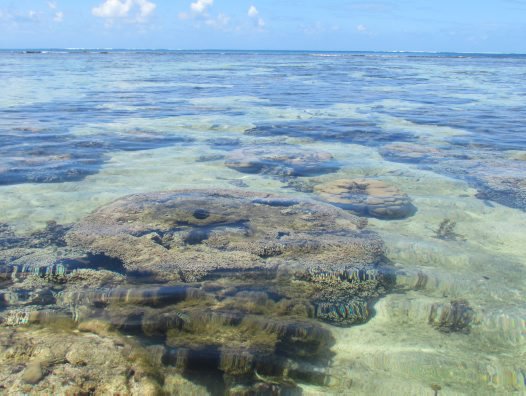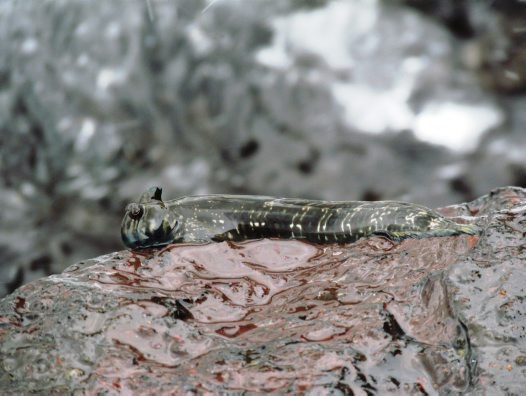Finding Land Fish in French Polynesia: Black sands, stormy seas and raining fish!
The sun was setting, grey clouds were on the horizon and the air was feeling cold. Stormy weather was around. Sampling blennies on Tahiti this week has proven to be an entirely new kettle of fish, which at times has been rather dangerous.
Blennies love the tide pools and the wave action of the intertidal zone, and it is generally in these sorts of locations that we can expect a wonderful diversity of blennies exhibiting a range of amphibious behaviours. But here on Tahiti, the swell has been up with large waves crashing into the most optimal tide pool environments.

© Australian Museum
Slipping and sliding, it is not just us the clumsy scientist that have been sloshed around by the sheer force of the waves. Indeed, these land lubbing fish Alticus simplicirris are just as vulnerable to the large waves as any Homo sapiens. When the waves roll in, A. simplicirris can do one of two things: hop away helplessly or hunker down in a small hole or crevasse in the rock.
But not every fish is prepared, and this week we have watched many a blenny go flying as the waves crashed in, making them vulnerable to predators below and physical damage. In fact it is this very reason, predators below, that some believe the blennies made their transition to land in the first place.
Following some very sketchy and dicey experiences trying to discover new blennies on precarious rocky outcrops, we have been more than relieved to see some blue sky appear in the last few days. The swell has dropped somewhat and we have expanded our search into the flat shallow reef area. Blennies in this environment are not at all amphibious and make interesting comparisons both in terms of morphology and genetics to those that are venturing out of water.
Very slowly we waded through thigh deep water interspersed with different types of coral. Here, blennies love to live on the tops of the big massive corals (Porites) and if you are very patient and walk very slowly, you may just catch one peering out of an old tube worm hole or crouching between coral folds just near the surface. Several hours later and we had found two!
But we decided that this was certainly not enough of a challenge for us and so we snorkelled out to the edge of the reef, in the wash of the famous surf break Teahupoo, to see what sort of blennies lived here. With snorkels on and swell rolling in, we bobbed about colourful corals and exquisitely coloured tropical fish keeping our eyes on what we could only guess was blenny habitat.

© Australian Museum
It took a while, but finally we saw it, a cleverly camouflaged miniscule blenny, less than 2cm in length, foraging on algae among the corals. “How on earth would we catch it?” we wondered! This was going to be the greatest blenny challenge yet! Several hours of trying, a lunch break, some small hand nets and some free diving later, this beautiful fish was in our net. I’m not embarrassed to say that I squealed with excitement!
Our trip is now drawing to a close, and in total we have found eight different species of blenny. All in all, they range from those that live out of water, to those that live in small rock pools and jump from pool to pool if threatened, to those that like other fish simply swim.
As a result, whilst on the small islands of French Polynesia, we have managed to sample fish along an entire spectrum of adaptation to land. We hope that by studying this remarkable transition, we may well gain insights into what happened during the Devonian 350 million years ago when fish first left the water and vertebrates colonized land.
It certainly is hard to forget on a field trip like this that our ancestors really were fish.
Read my previous blog post.












